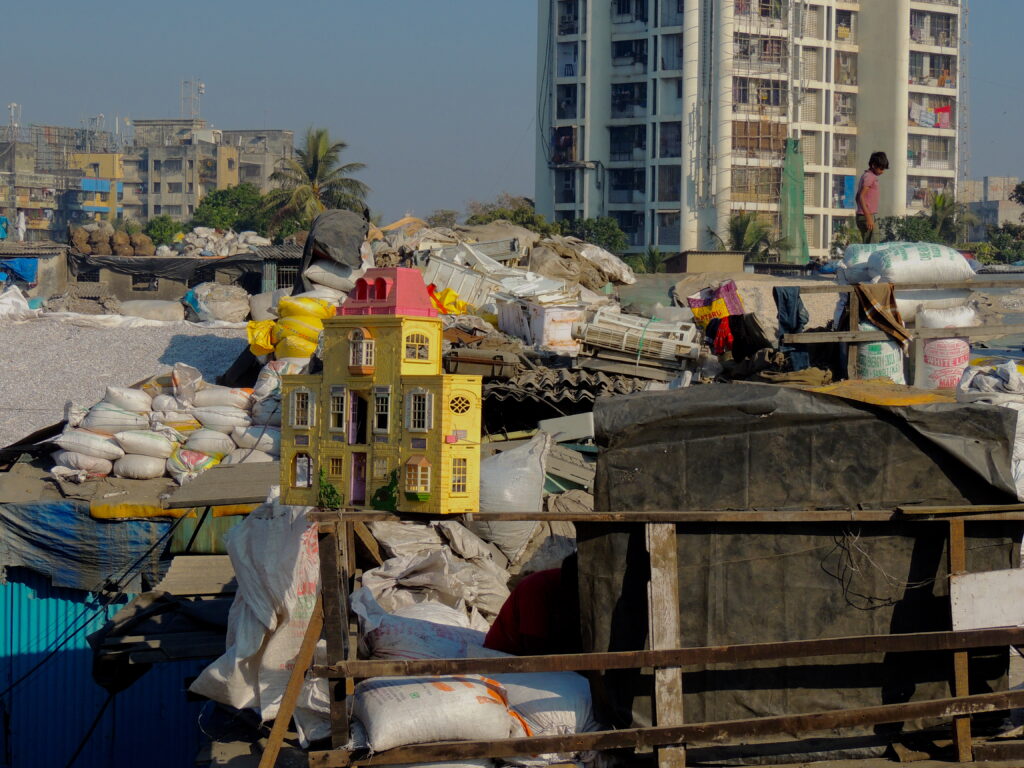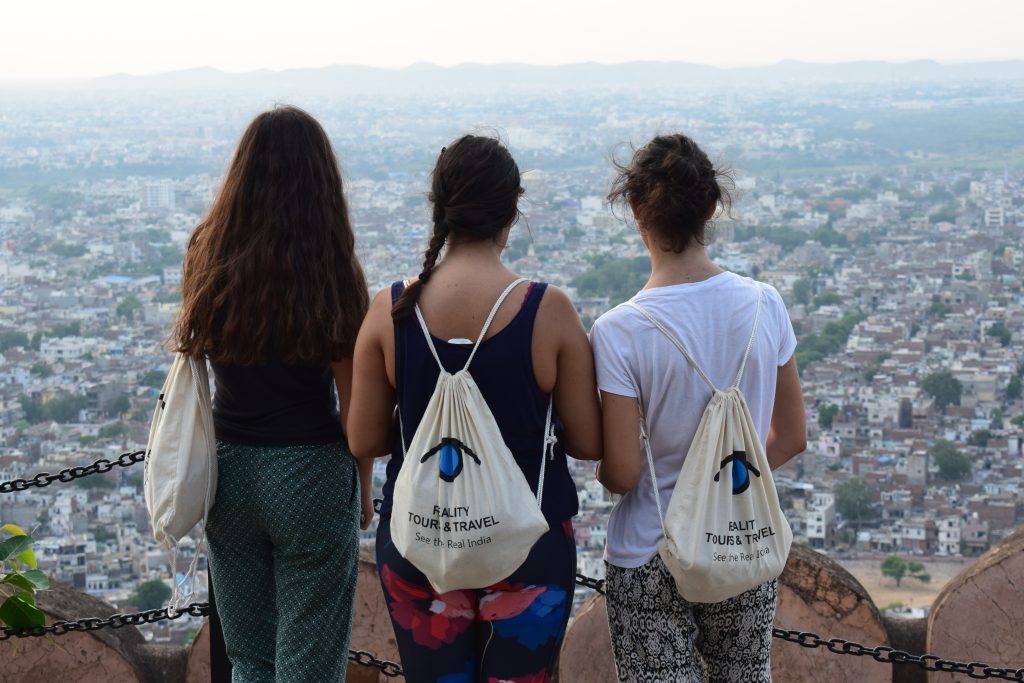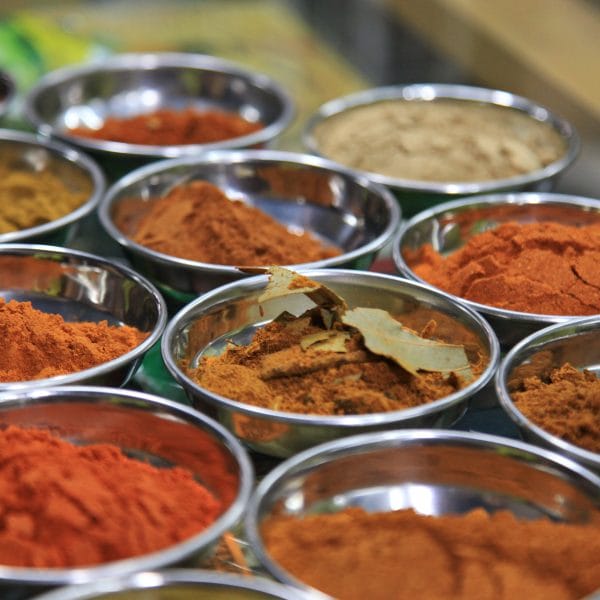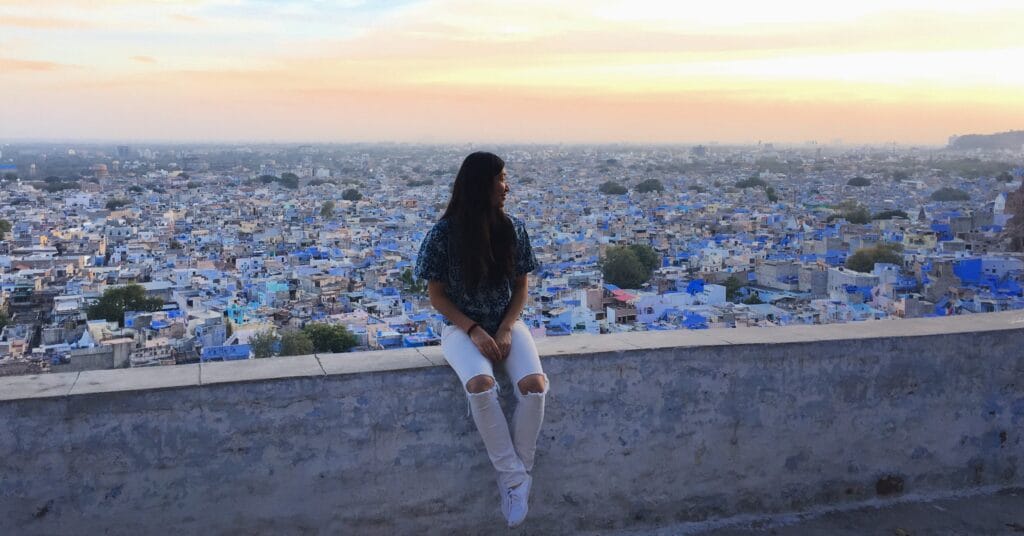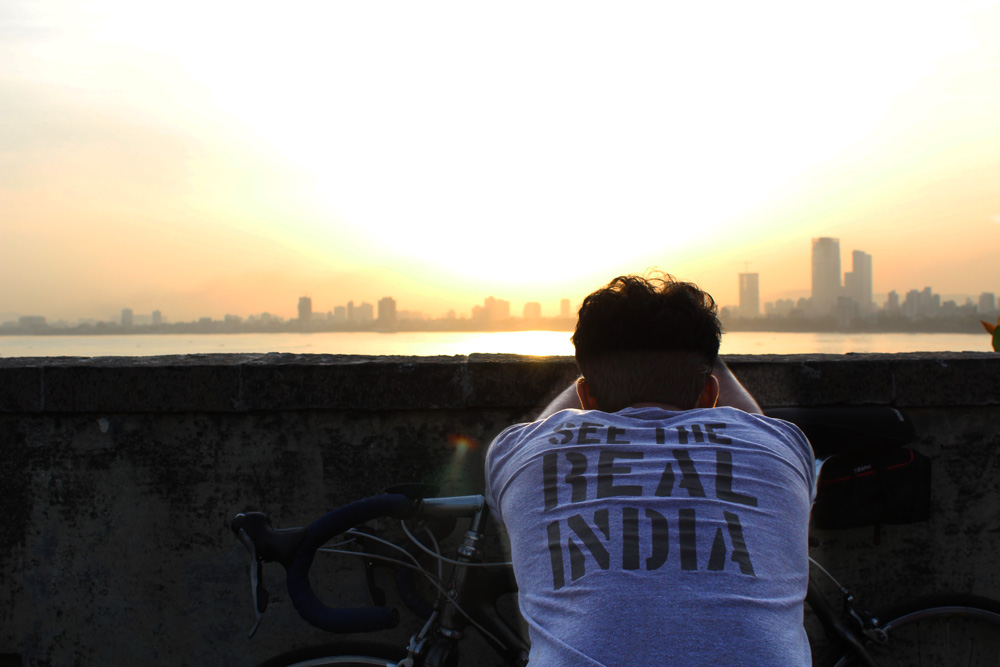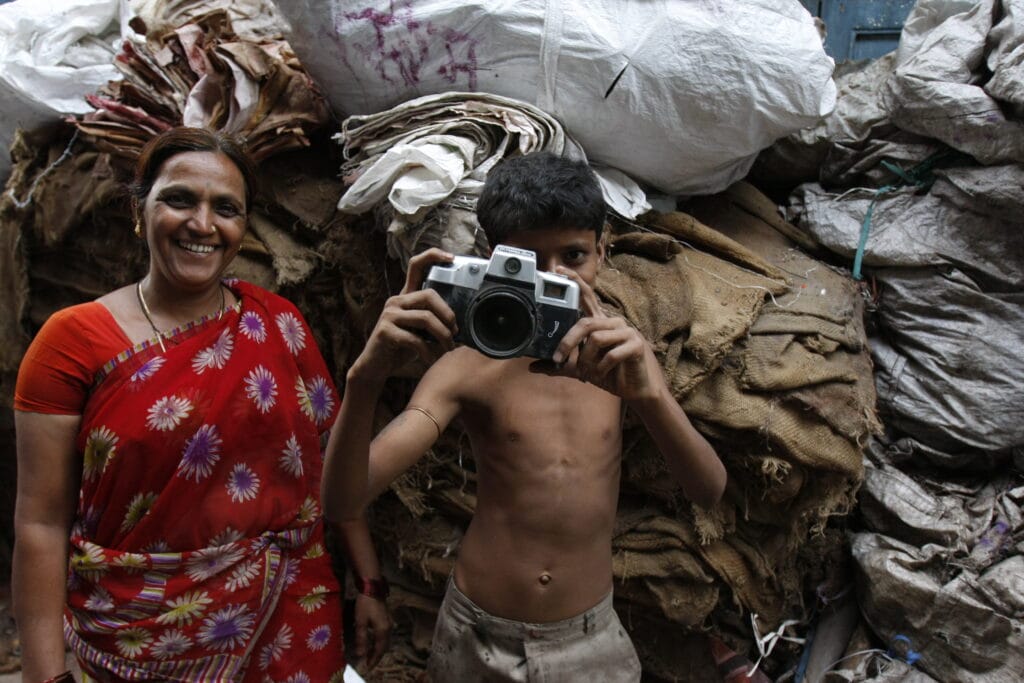Salman Rushdie once wrote that “to understand just one life you have to swallow the world“. In Dharavi there’s an estimated one million lives. In Sanjay Colony, there’s a not inconsiderable 50,000.
As we try to convey on our educational tours, these communities are incredibly complex. Whilst the word ‘slum’ evokes a negative view (The Merriam-Webster Dictionary definition runs to ‘an area of a city where poor people live and the buildings are in bad condition‘) the reality is not so cut and dry. Yes, the challenging conditions show a lack of fairness in our societies and a failure of government but there are also positive aspects; a strong sense of community, rents which make a rural urban migration possible and the potential for residence to play a part in shaping and moulding their environment.
Slums do not conform to a simplistic Dickensian definition of dirt, squalor and crime; neither should we assuage our sense of guilt at all that we have by romanticising the lives being played out there. The reality is it’s far more nuanced. To that end, here’s a few books straight from the Reality bookshelf which might help shape your understanding of what is an incredibly complex topic
Arrival City - Doug Saunders
In a nutshell: The 21st century will see a final rural to urban migration driven by the desire of the rural poor to access a better life, improved job opportunities and social mobility.
Whilst Saunders accepts the challenges of life in a slum, he believes in their importance in facilitating this rural urban migration and argues that rather than seek to obliterate them, they need to be understood, supported and developed, and in doing so, will facilitate personal empowerment, social mobility and economic development.
What our staff say: “Interwoven with personal encounters from his travels (as far ranging as India, China and Turkey and as close to home as Tower Hamlets in London) this makes for a really engaging and thought provoking read”.
Rediscovering Dharavi - Kalpana Sharma
In a nutshell: First published in 2000, journalist Kalpana Sharma brings the history of ‘Asia’s Largest Slum’ to life with stories and anecdotes taken from Dharavi residents, and in doing so, captures much of Dharavi’s industry and vibrancy.
What our staff say: “Sharma says she wrote this book to challenge widely held misconceptions amongst her fellow Mumbaikars, to show the importance of Dharavi and it’s residents in the life of the rest of Mumbai and give a voice to slum dwellers which comprise of half the population of the city – she has certainly done that!”
Slumming It - Fabian Frenzel
In a nutshell: ‘Slumming It’ looks at the causes and consequences of slum tourism.
Whilst being at times quite academic in tone, this book charts the history of what is mistakenly taken to be a modern phenomenon all the way back to Victorian England and considers why it has seen a recent resurgence.
In doing so, Frenzel visited my slum tour operators across the world, including ourselves.
What our staff say: “Drawing upon Fabian’s extensive travels and research this book takes a thoughtful, considered look at what can is a very divisive topic. His research echoes themes that are also explored in some TED Talks we love. We’re delighted to have been able to have supported him in his researching it!”.
The Durable Slum - Liza Weinstein
In a nutshell: Another Dharavi specific book (which is a bit meatier than Kalpana Sharma’s ‘Rediscovering Dharavi’) which looks at how and why Dharavi has endured for over a century whilst other slums across India have been laid to waste by the bulldozers of progress.
Weinstein considers the role economic globilisation, urbanisation and India’s fractured politics has played in Dharavi’s fragile survival and looks to the future, with the land Dharavi occupies now representing commanding a vast real estate price and the Dharavi Redevelopment Project perpetually looming on the horizon.
What our staff say: “Informed by over a decade of research, a year of which was spend in Dharavi itself, this book gives an incredible overview of the factors which have shaped Dharavi’s precarious history, and those which will determine its future”.
Planet of Slums - Mike Davis
In a nutshell: The Guardian’s Ian Sansom describes this book as a ‘horrifying but essential read’ – Davis comes down far and hard on the side of being against slums.
Whilst drawing from a plethora of statistics, Davis employs wild exaggeration and hyperbole to sensationalise the topic. Whilst this has made his work accessible and widely read the book presents an incredibly unbalanced view.
What our staff say: “Davis’ polemic is coloured by anger, indignation and vitriol. Whilst this makes for an engaging read, there’s a complete lack of balance in the dystopian future he projects.”
Poor Little Rich Slum - Rashmi Bansal & Deepak Gandhi
In a nutshell: ‘Poor Little Rich Slum’ presents a series of snapshots of some of Dharavi’s one million residents, showcasing their dreams, aspirations and passions.
Through these stories Bansal and Gandhi celebrate the industry and enterprise of Dharavi. What’s more, by making these stories so engaging and accessible, they have taken Dharavi to an Indian audience who are amongst those with the most negative perception of this place and those that live there.
What our staff say: “Running to around 200 pages and made up of very short (though rather strangely laid out) chapters, this is a nice introduction to Dharavi, via some stories about the lives lived there.”
Want to explore India through fiction? Check out our Recommended India Reading List (Fiction).
Want to see the real stories and vibrant community for yourself? Join our Dharavi Tour and discover the culture and life up close.

